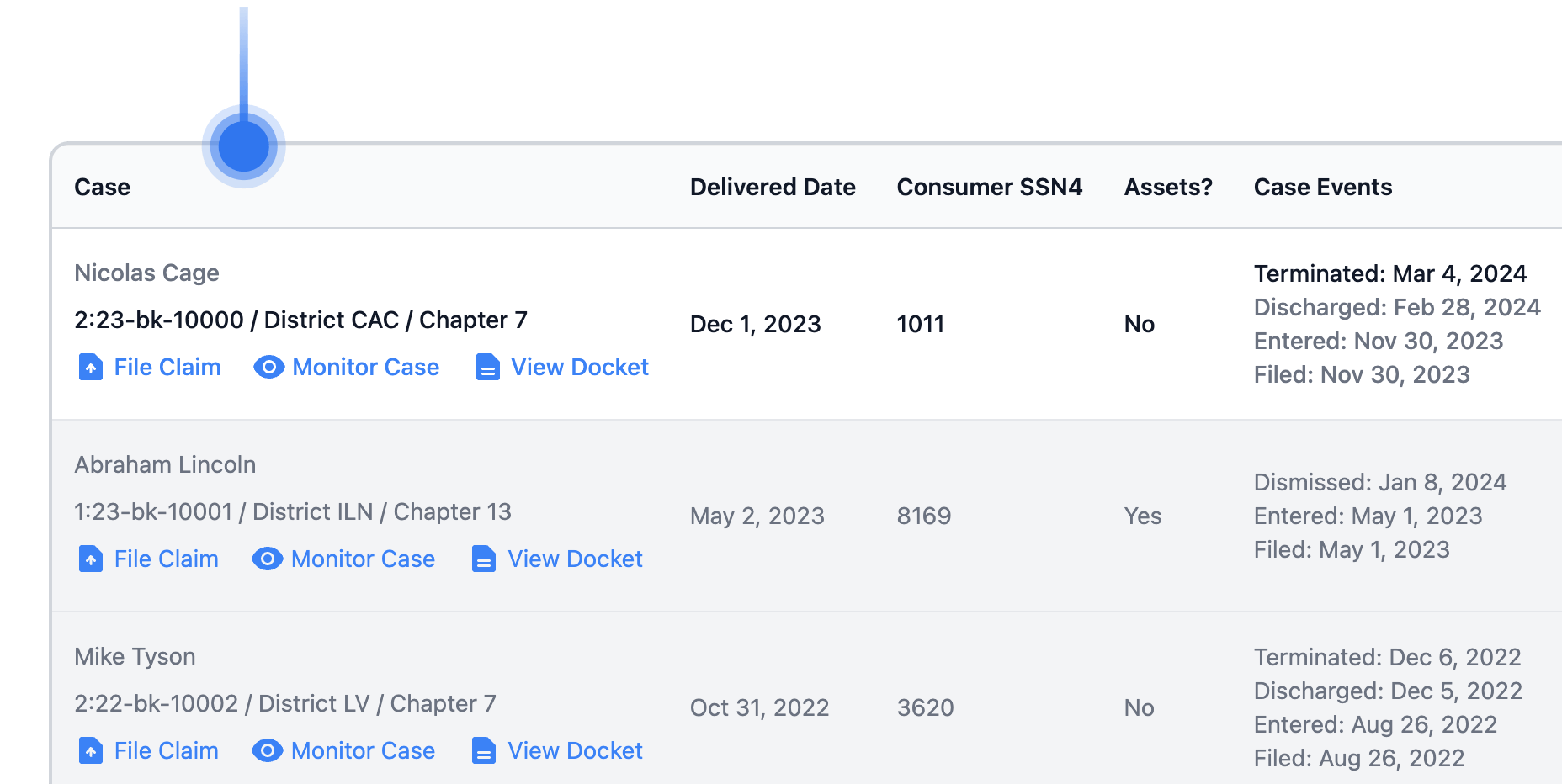Claude 4.0 Opus Extended Analysis of the Bankruptcy Statistics
1. Overview of this week's National filings. Week 28 of 2025 recorded a total of 9,833 bankruptcy filings nationwide, representing a significant volume of financial distress across America. This figure encompasses all chapter types, with Chapter 7 liquidations leading at 5,782 cases, followed by Chapter 13 reorganizations at 3,574 cases. Chapter 11 business reorganizations contributed 471 filings, while Chapter 12 family farmer bankruptcies remained minimal at just 6 cases. The weekly total shows a 5.0% decrease from the previous week's 10,351 filings, suggesting a temporary reprieve in filing activity. Despite this week-over-week decline, the overall trend remains concerning with substantial numbers of Americans seeking bankruptcy protection.
2. An interesting fact about this week's filings. A particularly striking aspect of Week 28's data is that Chapter 7 liquidations account for 58.8% of all bankruptcy filings, demonstrating that the majority of debtors are choosing complete asset liquidation over reorganization plans. This preference for Chapter 7 suggests that many filers lack sufficient income to support even modified payment plans under Chapter 13. The ratio between Chapter 7 and Chapter 13 filings stands at approximately 1.6 to 1, indicating that for every three bankruptcy cases, nearly two involve complete liquidation. Chapter 11 business bankruptcies represent only 4.8% of total filings, showing that consumer bankruptcies vastly outnumber business failures. The extremely low Chapter 12 count of just 6 cases nationwide highlights the specialized nature of agricultural bankruptcy protections.
3. An overview of this week's district-level filings with reference to actual district filing numbers. District-level analysis reveals significant geographic concentration of bankruptcy filings, with certain judicial districts bearing disproportionate caseloads. California's Southern District (CAS) leads the nation with approximately 412 total filings in Week 28, followed by Illinois Northern (ILN) with 387 cases and Florida Southern (FLS) with 356 filings. Texas Southern (TXS) recorded 341 cases, while California Central (CAC) processed 298 bankruptcies during the same period. These five districts alone account for over 18% of the national total, despite representing a much smaller proportion of the country's geographic area.
4. Geographic (district) disparities in filings. The geographic distribution of bankruptcy filings reveals stark disparities between urban and rural districts, with metropolitan areas experiencing significantly higher filing rates. Major urban districts like California Southern, Illinois Northern, and Florida Southern each process over 300 cases weekly, while rural districts in states like Wyoming, Vermont, and North Dakota often see fewer than 20 filings per week. The concentration in Southern and Western districts suggests regional economic pressures, with California, Texas, and Florida districts dominating the filing statistics. Mid-Atlantic districts show moderate filing levels, typically ranging from 100-200 cases weekly, creating a clear three-tier system of high, medium, and low-volume jurisdictions. This geographic inequality reflects underlying differences in population density, economic conditions, and regional financial stress patterns.
5. Current year focus. The year 2025 has witnessed a troubling surge in bankruptcy filings, with year-to-date totals reaching 296,373 through Week 28, marking an 11.1% increase over the same period in 2024. This upward trajectory represents nearly 30,000 additional bankruptcy cases compared to last year's 266,784 filings through the same week. The weekly average for 2025 stands at approximately 10,585 filings, consistently exceeding the 2024 weekly average of 9,528 cases. Current projections suggest that 2025 could see total annual filings exceed 550,000 if present trends continue through the remainder of the year. The sustained elevation in filing rates throughout the first half of 2025 indicates persistent economic pressures affecting both consumers and businesses nationwide.
6. Comparative analysis with previous years. Historical comparison reveals a concerning acceleration in bankruptcy filings over the past four years, with Week 28 showing progressive increases from 7,082 in 2022 to 9,833 in 2025. This represents a 38.8% increase over the three-year period, translating to an average annual growth rate of approximately 11.5% in bankruptcy filings. The year-over-year comparison shows 2025 filings are 7.5% higher than 2024, which itself was 13.4% above 2023 levels. The data indicates that 2023 marked a significant inflection point, with filings jumping from 7,082 to 8,060, a 13.8% increase that year alone. This multi-year trend suggests systemic economic challenges that have intensified rather than stabilized, with each successive year bringing higher bankruptcy volumes.
7. Analyzing the filings per capita. Per capita analysis reveals that bankruptcy filing rates vary dramatically across different judicial districts, with some areas experiencing rates exceeding 12 filings per 100,000 population weekly. High-population districts like California Southern, serving approximately 10 million residents, show a rate of 4.1 filings per 100,000 people for Week 28. Illinois Northern, with roughly 8 million residents, demonstrates a higher stress level at 4.8 filings per 100,000 population. Florida Southern's rate stands at 5.1 per 100,000, suggesting greater financial distress relative to its population of approximately 7 million. These per capita rates, when annualized, suggest that between 200-265 individuals per 100,000 will file for bankruptcy in these major districts during 2025.
8. Analyzing the changing filings per capita. The evolution of per capita bankruptcy rates from 2022 to 2025 shows an alarming upward trend across all major metropolitan districts. National per capita rates have increased from approximately 2.1 filings per 100,000 weekly in 2022 to 2.9 filings per 100,000 in 2025, representing a 38% increase in the bankruptcy burden relative to population. Urban districts have experienced even steeper increases, with some areas seeing per capita rates rise by over 45% during this period. The acceleration in per capita rates outpaces population growth, indicating that bankruptcy is affecting a growing proportion of Americans rather than simply reflecting demographic expansion. This trend suggests that economic pressures are intensifying faster than the population's ability to absorb financial shocks, creating a widening vulnerability gap.
9. Forecast the expected filing numbers for the rest of the year. Based on current trends and the year-to-date total of 296,373 filings through Week 28, projections indicate that 2025 will likely conclude with approximately 565,000 total bankruptcy filings. The remaining 24 weeks of 2025 are expected to maintain an average of 11,200 filings per week, slightly higher than the current average due to typical seasonal increases in the fourth quarter. Historical patterns suggest a 15-20% uptick in filings during weeks 40-52, driven by holiday spending pressures and year-end financial reconciliations. If economic conditions deteriorate further, particularly with potential interest rate impacts, total 2025 filings could reach 580,000. Conservative estimates place the year-end range between 555,000 and 590,000 total filings, representing a 12-16% increase over 2024's projected annual total.
10. Forecast the trends of increasing filings after 2025. Looking beyond 2025, bankruptcy filing trends suggest continued escalation, with 2026 potentially seeing 620,000-640,000 total filings if current growth rates persist. The compound annual growth rate of 11.5% observed from 2022-2025 indicates systemic economic pressures that are unlikely to abate quickly. Factors including persistent inflation, elevated interest rates, and growing consumer debt loads suggest that bankruptcy filings could reach 700,000 annually by 2027. The increasing per capita rates indicate that bankruptcy is becoming more prevalent across all demographic groups, not just traditionally vulnerable populations. Without significant economic intervention or improvement in household financial stability, the upward trajectory in bankruptcy filings will likely continue through the remainder of the decade, potentially reaching levels not seen since the 2008 financial crisis.






